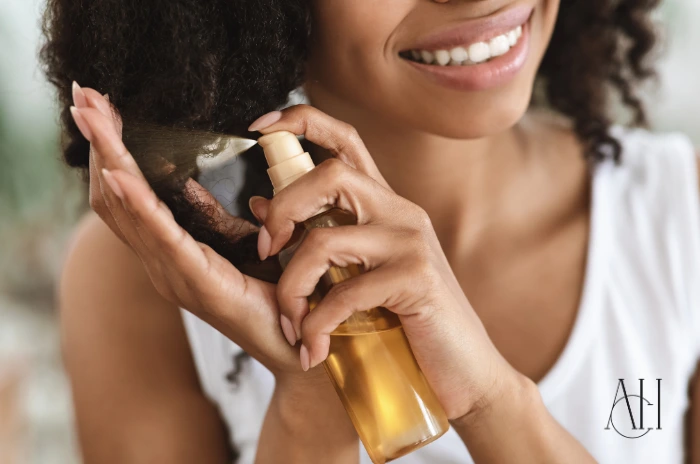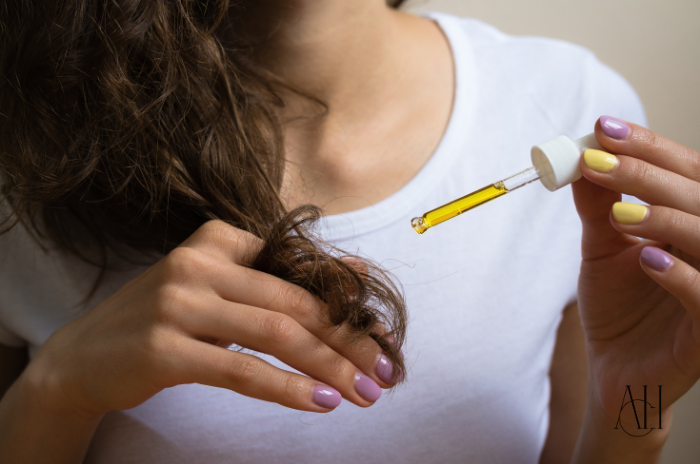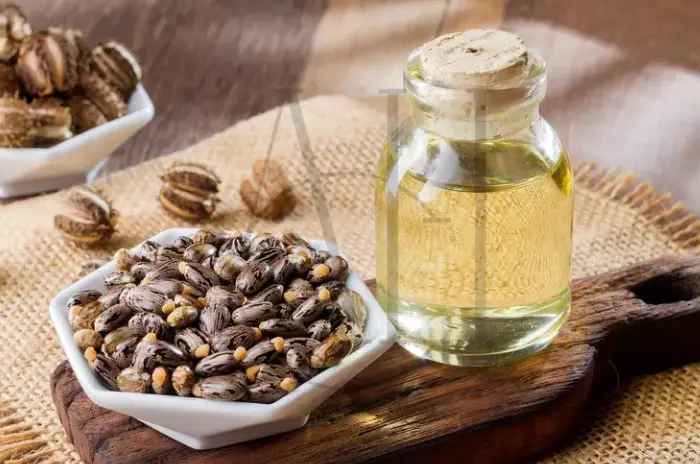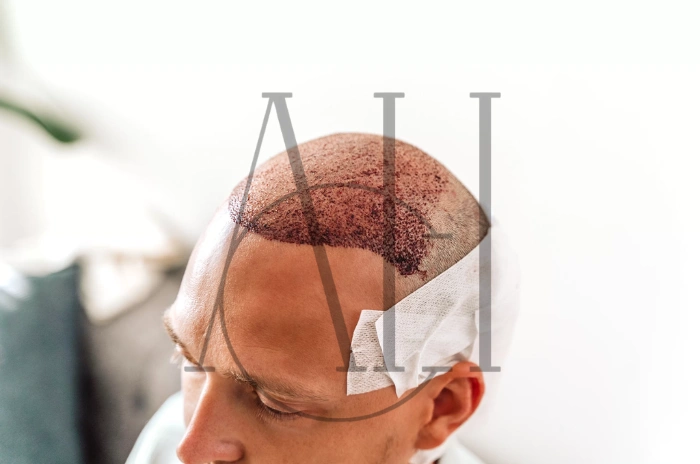Caring for your curls isn’t just a routine—it’s a commitment to embracing your natural beauty. Whether you’re just beginning your curly hair care journey or looking to fine-tune your routine, this comprehensive guide is designed to help you achieve perfect, healthy curls. From understanding your hair type to selecting the right products and techniques, we’ve got every aspect of natural curly hair care covered.
Well-defined, frizz-free curls require intentional and consistent care. With the right knowledge and tools, you can turn even the most unruly curls into your best feature. Let this guide be your trusted companion on the path to vibrant and resilient curls.
Table of Contents
ToggleUnderstanding Different Hair Types
Every hair journey starts with knowing your hair type. This step is crucial to tailor your curly hair care regimen. Knowing whether your strands are straight, wavy, curly, or coily can make all the difference in selecting the right products. Each type has unique needs and characteristics that require special attention. Proper identification helps you prevent damage and maximize your hair’s natural potential.
Straight Hair
Straight hair lacks curl and typically has a smooth, shiny texture. It often gets oily faster since sebum travels easily down the hair shaft. Because of its straight shape, this hair type reflects more light, enhancing shine. However, it may struggle to hold styles like curls or waves. Regular washing and lightweight styling products are often necessary to maintain volume.
Wavy Hair
Wavy hair forms loose, S-shaped patterns. It tends to be frizz-prone and benefits from lightweight products that enhance texture without weighing it down. Wavy strands strike a balance between straight and curly, offering versatile styling options. Without proper care, waves can lose definition or become puffy. Hydrating sprays and light mousses are ideal for enhancing natural movement.
Curly Hair
Curly hair forms defined ringlets or spirals. It requires moisture-rich products and gentle handling to maintain shape and prevent frizz. Curly strands often have varying patterns throughout the scalp. They are more prone to dryness due to the twisty path of natural oils. Consistent moisturizing and curl-defining routines are key to keeping curls vibrant.
Coily Hair
Coily or kinky hair has tight, zigzag patterns. It’s the most fragile hair type, prone to dryness, and thrives with protective styling and deep conditioning. This hair type has the most shrinkage and requires patience to detangle. It benefits greatly from leave-in conditioners and butters. Low-manipulation styles help maintain length and reduce breakage.
Different Types of Curly Hair
Curly hair is categorized by the shape and tightness of the curl pattern. Understanding these categories allows you to choose tailored treatments and techniques. Each type reacts differently to humidity, styling methods, and products. Identifying your curl pattern sets the foundation for effective care and styling.
-
Type 2 (Wavy): 2A (loose wave), 2B (defined S-wave), 2C (frizzy, thicker waves)
-
Type 3 (Curly): 3A (loose curls), 3B (springy ringlets), 3C (tight curls)
-
Type 4 (Coily): 4A (soft coils), 4B (Z-pattern coils), 4C (tightest curls with minimal definition)
Knowing your curl type also helps you anticipate how your hair responds to different climates and seasons. It guides you in product selection, such as moisture levels and hold strength. With the right strategy, each curl type can reach its fullest, healthiest potential.
How to Know What Type of Curly Hair You Have
To identify your curly hair type, you need to evaluate your hair when it’s clean and product-free. Pay attention to the curl pattern, strand thickness, and overall volume. Your hair type may even shift with changes in climate, health, or age, so reassessing over time is beneficial.
-
Wash and air-dry your hair without products
-
Observe the curl shape
-
Compare with curl type charts
-
Consider texture, porosity, and density for a more tailored routine
Tackling Common Curly Hair Challenges
Curly hair comes with unique struggles. From humidity-induced frizz to moisture retention issues, it demands consistent care. Knowing how to manage these issues will keep your curls vibrant and resilient. A proactive routine helps maintain shape and strength.
-
Frizz: Use anti-humidity products and seal with oils
-
Dryness: Hydrate with deep conditioners and leave-ins
-
Breakage: Minimize brushing, use protective styles
-
Shrinkage: Stretch hair with twist-outs or braids

Treasuring Your Curls: Maintenance and Protection
Healthy curls need consistent care. Daily and weekly habits directly impact the health and appearance of your hair. The right nighttime routine and protective styling can minimize breakage and maintain moisture. This stage of care is essential for long-term curl health.
-
Nighttime care: Use a satin bonnet or pillowcase
-
Weekly treatments: Apply deep conditioners or masks
-
Protective styles: Try braids or buns to reduce manipulation
Find the Right Curly Hair Routine for You
A personalized curly hair routine maximizes curl health and appearance. Customization ensures your hair gets exactly what it needs. Your environment, daily habits, and even your water type can influence your routine. Adapting over time helps maintain results.
-
Curl type
-
Hair porosity
-
Climate
-
Lifestyle (e.g., gym-goers need more frequent washing)
Define Curls With A Styling Product
Styling is key to beautiful curls. Use curl creams, mousses, or gels suited for your curl type. The right product defines and holds shape while minimizing frizz. Application technique matters just as much as product choice. Apply to wet hair in sections, using techniques like:
-
Rake and shake
-
Prayer hands
-
Finger coiling
Let the product dry naturally or with a diffuser.
Finish With A Serum For Shine And Protection
A lightweight serum seals in moisture and adds a glossy finish. It acts as a barrier against humidity and pollutants. Choose natural oils that enhance both shine and nourishment. A finishing serum is the final touch for polished curls. Choose serums with natural oils like argan or jojoba for extra nourishment.
Hair Care Routine for Women
Women with natural curly hair should follow a consistent routine. Hormonal changes, styling preferences, and lifestyle all influence how curls respond. Tailoring your approach ensures your hair stays healthy and manageable. A steady routine builds stronger, more beautiful curls.
-
Deep condition regularly
-
Use a leave-in conditioner and styling cream
-
Protect hair at night
-
Trim split ends every 8-12 weeks
Hair Care Routine for Men
Men also benefit from structured curly hair care routines. Whether your hair is short or long, the basics of hydration and gentle handling still apply. Simplicity and consistency are key. Building a habit around maintenance leads to lasting results.
-
Co-wash between shampoos to retain moisture
-
Use curl-enhancing creams
-
Keep hair trimmed and shaped for easy maintenance

How to Care for Your Curly Hair
1- Use a sulfate-free shampoo
Sulfates strip natural oils. Choose gentle cleansers to preserve moisture. This prevents dryness and irritation, especially for sensitive scalps. Sulfate-free shampoos also help maintain color and natural curl shape.
2- Avoid Excessive Shampooing
Wash once or twice a week. Co-wash between shampoos to refresh hair. Overwashing can deplete your hair’s natural oils. Stick to a routine that balances cleanliness with hydration.
3- Cut back on the heat tools
Limit flat irons and blow dryers. If necessary, use a diffuser on low heat. Excessive heat can damage your curl pattern permanently. Air-drying is always the healthiest option when possible.
4- Use Moisturising Hair Treatments
Deep condition weekly to restore hydration and elasticity. Look for ingredients like shea butter, coconut oil, and aloe vera. These treatments replenish lost moisture and help prevent breakage. Regular use results in softer, more manageable curls.
5- Use a diffuser when blow drying
A diffuser evenly distributes heat, reducing frizz and preserving curl shape. It also adds volume without disturbing your curl pattern. Always use a heat protectant before diffusing. Keep the dryer on a low setting to avoid heat damage.
6- Use a wide-tooth comb
Detangle gently from ends to roots to prevent breakage. Wide-tooth combs reduce pulling and snapping. Use on wet, conditioned hair for best results. This method keeps curls intact and frizz-free.
7- Avoid heavy products that weigh down the hair
Choose lightweight formulas suited for your curl type. Heavy butters and waxes can cause buildup and limp curls. Focus on hydrating ingredients without silicones. This keeps curls bouncy and full of life.
8- Trim hair regularly to avoid split ends
Frequent trims keep curls looking fresh and healthy. Split ends can travel up the hair shaft and cause more damage. Trimming every 8–12 weeks is ideal for most curly types. It also helps maintain the overall shape of your hairstyle.
9- Dry hair with a cotton shirt instead of a towel
Cotton shirts reduce friction and prevent frizz. Terry cloth towels can cause snags and disrupt your curl pattern. Gently scrunch water out without rubbing. This small switch can greatly improve your hair’s texture.
10. Detangle from the ends first
Work upward to minimize damage and breakage. This approach avoids creating knots and tension at the roots. Use your fingers or a wide-tooth comb. Always detangle with conditioner for smoother results.
11. Wash hair with cold water
Cold water seals the cuticle, adding shine and reducing frizz. It also helps preserve moisture within the hair shaft. Finish your wash routine with a cold rinse. This simple step enhances curl definition.
Curly Hair Care Summary Table
| Step | Description |
|---|---|
| Cleanse | Use sulfate-free shampoo or co-wash |
| Condition | Deep condition weekly for hydration |
| Style | Apply curl cream, gel, or mousse |
| Dry | Air dry or use a diffuser |
| Maintain | Night protection and regular trims |
FAQ for The Ultimate Curly Hair Care Routine for Perfect Curls
What is my curl type, and how can I identify it?
Identify your curl type by observing the shape of your curls on freshly washed, product-free hair. Compare with type charts (2A-4C) and consider your hair’s texture and porosity.
How often should I wash curly hair to maintain its health?
Wash once or twice a week with sulfate-free shampoo. Co-wash as needed to keep hair fresh without stripping oils.
What are the best products to define and maintain curly hair?
Look for curl creams, leave-in conditioners, lightweight gels, and serums. Ingredients like shea butter, coconut oil, and aloe vera are great for curly hair care.
How can I prevent frizz and keep my curls moisturized?
Use hydrating products, avoid towel-drying, and apply oils or serums to seal in moisture. Sleep with a satin bonnet or pillowcase.
What is the Curly Girl Method, and does it work for all curl types?
The Curly Girl Method avoids sulfates, silicones, and heat. It can work for most natural curly hair types but requires customization based on individual needs.
Should I use a diffuser or air dry my curly hair?
Both methods work. Air drying reduces heat damage, while a diffuser can speed up drying time and add volume without frizz.
How do I refresh my curls between wash days?
Mist with water or a leave-in conditioner mix. Use a curl refresher spray or light gel to redefine curls. Avoid brushing dry hair.
What are common mistakes to avoid in a curly hair care routine?
Avoid using sulfates, brushing dry curls, skipping conditioner, and overloading with heavy products. Stick to a consistent curly hair routine for best results.




